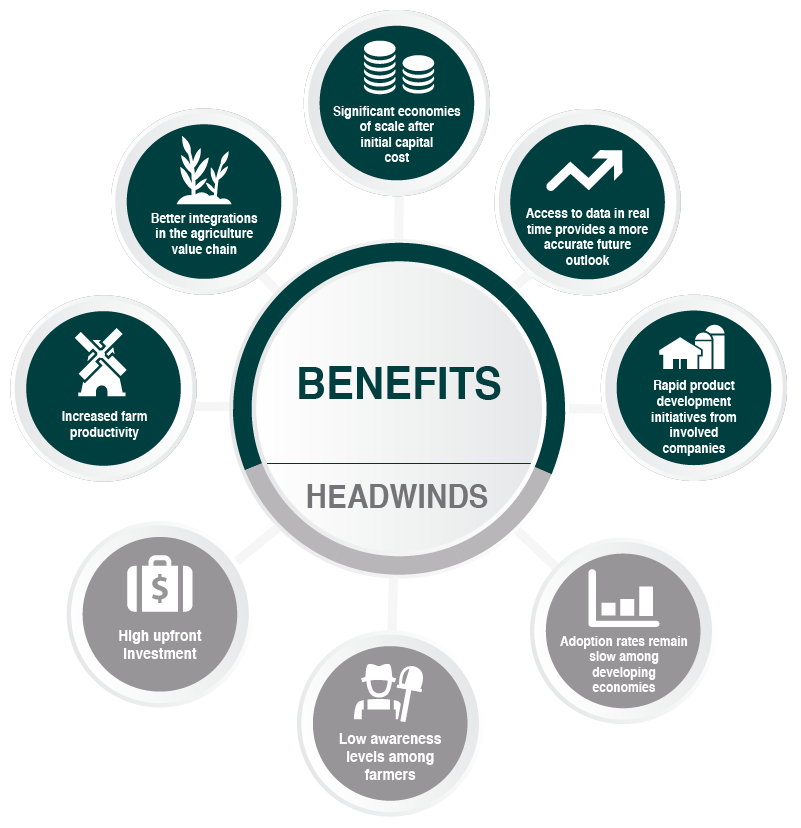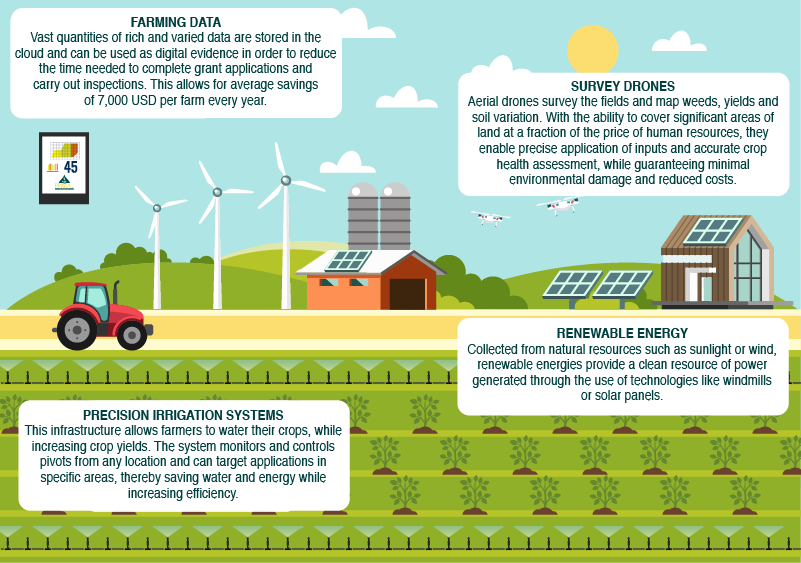“Cognitive computing in agriculture is going to be the most disruptive force in the industry, as big as the Green Revolution”
Rick Morris, IBM Smarter Agriculture Executive
We live in extremely exciting times. Sustaining more people with increased efficiency and at a lower cost than during any other period in human history, modern agriculture has evolved at an incredible and unprecedented rate. Despite this progress, we still face great challenges. Changing weather patterns, soil degradation and water scarcity are altering productivity in many agricultural regions around the world. At the same time, demand is increasing with the global population on its way to over 9 billion by 2050.
This rise in population will require a 40% increase in global food production. Growers around the globe are meeting this challenge, but they must do so in a manner that does not irreparably damage the planet’s resources. Global agriculture is valued at $5 trillion dollars, which represents 10% of global consumer spending, 40% of employment and 30% of greenhouse gas emissions. Researchers and entrepreneurs are continuously developing tools in the fields of plant genetics, chemistry, agronomics and machinery to meet this increasing demand. One of the latest innovations in agriculture is artificial intelligence. With drones, robotics, sensors, algorithms and machine learning, agriculture is quickly becoming digital. These digital resources we adopt enable us to easily collect vast amounts of data and truly optimize crop care strategies on a daily basis.
.
Precision Farming is Here to Disrupt Traditional Farming Practices
Source: Bidness Etc (2017)
.
The latest revolution of the industry will be based on the use of cognitive technologies that help understand, learn, reason, interact and thus, increase efficiency. The adoption of high-speed variable rate planting equipment will provide accurate “as planted” information in real time. Yield monitors will supply granular information about production at harvest. Farmers will utilize sensors and soil sampling to gather data on soil moisture and nutrient levels across their fields. From mobile apps to unmanned aerial vehicles, these tools will collect data that can be used to assess crop health and monitor pest and disease conditions during the season. This fundamental information is key to building predictive algorithms that will help monitor crop conditions and identify water scarcity, plant population, and soil moisture levels. Essentially, these technologies will help secure our global food supply.
.
Future Farms: Smart and Sustainable
Source: Primal Group (2017)
.
Always determined to remain at the forefront of this new agricultural system, we at Primal Group have strengthened our fleet of drones and installed specialized software systems that collect, manage and analyze crop data in real time. With drones, robotics, sensors, algorithms and machine learning, the resources we have enable us to easily collect vast amounts of data and truly optimize crop care strategies on a daily basis. Enabling us to make the right decisions at the right time, these resources will strengthen the health and productivity of our crops.

